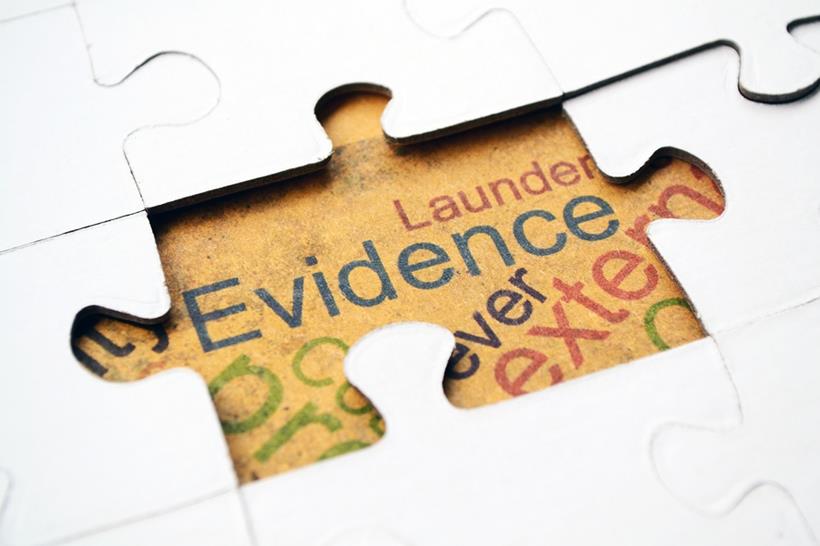
IT projects are variously reported in both online and print media of having a failure rate approaching 70% when measured against their original objectives. Clients we have worked with have admitted that they have had at least one or more attempts at rolling out an EDRMS. Failure is commonplace.
Frequently, the failure is sheeted home to a failure of change management; that is a failure to change the attitude of key people in the organisation to one which is consistent with recognising the value of good recordkeeping practices to the organisation and themselves.
So what are the seven deadly sins of EDRMS change management? Here are our thoughts:
1. Underestimation
EDRMS roll-outs underestimate the degree of change required. In the worst cases they treat the roll-out of the system as they might a Microsoft Office upgrade; with minimal training and an expectation that the users will find their way through frequent use.
In better managed roll-outs, they fail to recognise the most fundamental issue to overcome in change; the user perception that I will have to give up something. In records management that something is being the “gatekeeper” of data or the control of “my data”. To counter the perception of loss of power or loss of control, strong change management processes are required.
2. Ignorance
Here, the degree of change is acknowledged but too much store is placed in a single approach to change. Either the change strategy is all carrot, concentrating on getting engagement; or the strategy is all stick relying on compliance and directives from executive management to drive uptake. Change management is implemented in seeming ignorance of the range of tactics necessary to get people to change their behaviour.
To get the critical mass of users changing their behaviours and therefore having a successful implementation requires multiple change tactics. No single tactic works across a workforce.
Some people welcome the new beginning and need little incentive other than to receive technical training to ensure they perceive they are capable and have the imprimatur of their boss and colleagues to adopt the new technology and procedures.
Others have a fear of letting go and need to be encouraged to try small steps with a process well known to them and to be given plenty of working examples using their own files to follow. Eventually, the people of this group who refuse to change may need to be performance managed, but engagement tactics are a much better starting point.
The rest of the population hover excruciatingly between trial and adoption. They may need tactics which are more about helping them to reduce the cost and risk of adoption. For example, helping them create a folder structure, or getting their manager to allow them to allocate time to set their “system” of working up under the new classification rules using the new software.
Senior management may need a separate set of tactics altogether concentrating on case studies of productivity improvements gained by others and analysis of potential improvements in their patch.
3. Centralisation
Recordkeeping capability and technical capability beyond viewing, creating and storing records are traditionally instilled into a small group within a recordkeeping function. In roll-outs of several thousand users or more, continuing to centralise all of the skills with regard to recordkeeping and use of more advanced functions creates a disempowered user base. The user base are unable to grasp the benefits of managing records wisely and treat the practice as something recordkeeping unit does and not something they have ownership for.
A devolved model creates a band of super users to provide help and expertise to local users. This self-sufficiency at the coal-face leads to innovation. The value created is that which matters to the end users and their management, not that which matters to a group of record administrators divorced from the day-to-day business.
This does not mean that a centralised productivity improvement program utilising the capability of the software and re-engineering processes as required cannot be executed. On the contrary, the devolved model allows for a much less stressful and more complete execution.
4. Hopefulness
Many change programs rely on the software itself to be the vehicle of change in a misguided view approaching the maxim that if we build the software, they will come. Emphasis is given to technical training without due consideration of the need to have people comprehend why they should be learning the new software, what behaviours they will have to change and what benefits will accrue for them and the organisation in making those changes.
Insufficient attention is given to the individual and to teams. Their processes and attitudes remain the same, often negating the advantages of having a powerful or easy to use record keeping system.
5. Overestimation
There may be multiple tentacles of overestimation that strangle a project.
The overestimation starts with executive management. They have been told that they need to roll-out an EDRMS to comply with legislation or internal audit requirements or as part of a risk mitigation tactic. However, they do not understand the benefits of good recordkeeping processes and in particular, the impact on productivity. Senior executives sign off on EDRMS projects and recordkeeping policies and processes but do not see it as high priority. This fact is observed in their behaviours by for example, choosing to not allocate adequate resources, not compelling people to attend training, not including outcomes in score cards or not including recordkeeping benchmarks in the audit program.
Additionally, and sometimes because of the executive and senior manager’s behaviour, end user’s prioritisation of their daily, weekly and monthly tasks to include learning and executing good recordkeeping practices is overestimated.
In many cases, the computer literacy of users is overestimated. Whilst repeated patterns of key strokes and multiple local “superusers” to help them allows users challenged by computers and software to go unnoticed when using office software, the unfamiliar layout and logic of an EDRMS renders them incapable of working effectively and efficiently with the software.
Change programs must expect all of these behaviours, and more, which demonstrate low levels of prioritisation of records management as a topic and devise tactics to counter them.
6. Disengagement
The hierarchy within an organisation are not engaged from top to bottom. Gaps in engagement in not only what is happening but why it is happening causes time, resource and mind share allocation to be inadequate.
Briefings are often given to executives and senior managers with the expectation that they will faithfully cascade the information through their line to middle managers, supervisors and end users. This creates not only gaps in actual communication as some managers do not include the information in their briefings with their staff, but also in the style of communication and appropriate content. Executives require very different content and style of communication compared with supervisors and frontline staff. In addition different learning styles are usually not accommodated for creating further gaps in engagement.
Even when the cascade is successful in implementation, the 80% of 80% rule applies. The Executive remembers a maximum of 80% of what they were told and the Senior Manager remembers only 80% of what the executive told them being 64% of what the Executive was told. By the time the message gets to the frontline, there is a high chance that the key messages intended for the frontline are filtered out.
Engagement tactics must ensure each level of management through to the frontline is addressed appropriately and consistently with a specific outcome in mind using a wide variety of communication techniques from team briefs to video.
7. Incongruence
The seventh sin is the most common and the most debilitating to an EDRMS roll-out of all.
Deciding the change strategy in isolation to the training strategy and training model is a recipe for an incongruent motivational environment resulting in little or no changes in behaviours.
Training strategy supporting devolved recordkeeping relies on the creating of comprehension, belief and empowerment in super users at the local level. The change management strategy must support this by helping people to access information easily, get support easily when they are in doubt and have multiple examples of how to approach recordkeeping in their working environment to work from. The change management program must facilitate the superuser in their role of educating end users rather than always giving end users the answers.
Training strategy which supports a centralised model relies on creating functional software awareness and skill at the individual level and retaining recordkeeping skills as a centralised service to be accessed when needed. The change management strategy needs to support the engagement, questioning and listening skills of the support service personnel. This is to ensure that they have the ability to find and absorb the information held at local level necessary to adapt existing processes and procedures to recordkeeping norms or develop new processes and procedures to unleash productivity gains.
Having a training strategy and model which is incongruent with the change strategy, by working in isolation or without due consideration of needing to be entwined with each other, reduces the effectiveness of a roll-out markedly. In the worst cases it results in them working against each other, guaranteeing failure of effective implementation.
© 2011 Change Factory and Linked Training






